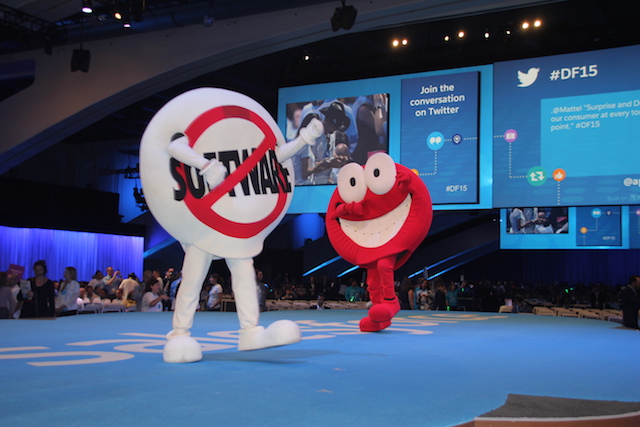One of the world’s biggest tech events – if not the biggest of the vendor shows – is Dreamforce, Salesforce’s annual spectacular that this this year attracted a 150,000 attendees to San Francisco’s Moscone Center.
Every year sees the company – which now holds the title of the world’s fourth biggest software company – and its CEO, Marc Benioff, defining the direction of the company in the face of a rapidly changing market. Despite being a pioneer in cloud computing, the company is as vulnerable to disruption as anyone else in a rapidly changing marketplace.
This year, the focus is on analytics and automation along with a strong leaning towards the Internet of Things and app development on the Lightning platform they announced last year.
With the Thunder platform, Salesforce is offering a service that allows businesses to connect devices onto their platform where users can build up rules based business automation. One notable part of this is the integration with Microsoft Office 365, another example of Microsoft’s reaching out to previously hostile companies.
For Automation, Salesforce is building upon its RelateIQ acquisition from last year, now branded as SalesforceIQ. The company says “Relationship Intelligence technology that utilizes advanced data science to analyze company relationships and drive actions.”
The Wave analytics service, which was also announced at last year’s Dreamforce, is a key part of the the business automation and IoT services in providing the insights into the data being collected. In many respect, Wave is going to be the glue that holds most of the products being announced this year.
Complementing the Wave, Thunder and SalesforceIQ products is the Lightning platform, again announced last year, that allows users to use the company’s AppCloud to quickly build business applications.
For Salesforce, the direction being laid out from this Dreamforce conference is in making helping customers deal with the masses of data coming into the enterprise. As Tod Neilsen, the company’s Executive Vice President of the App Cloud says, “we’re look at making the data usuable for spreadsheet users.”
As businesses struggle to manage and understand the masses of data flowing into their organisations, this may well be a powerful selling point for Salesforce.
Paul travelled to Dreamforce 2015 in San Francisco as a guest of Salesforce

Leave a Reply